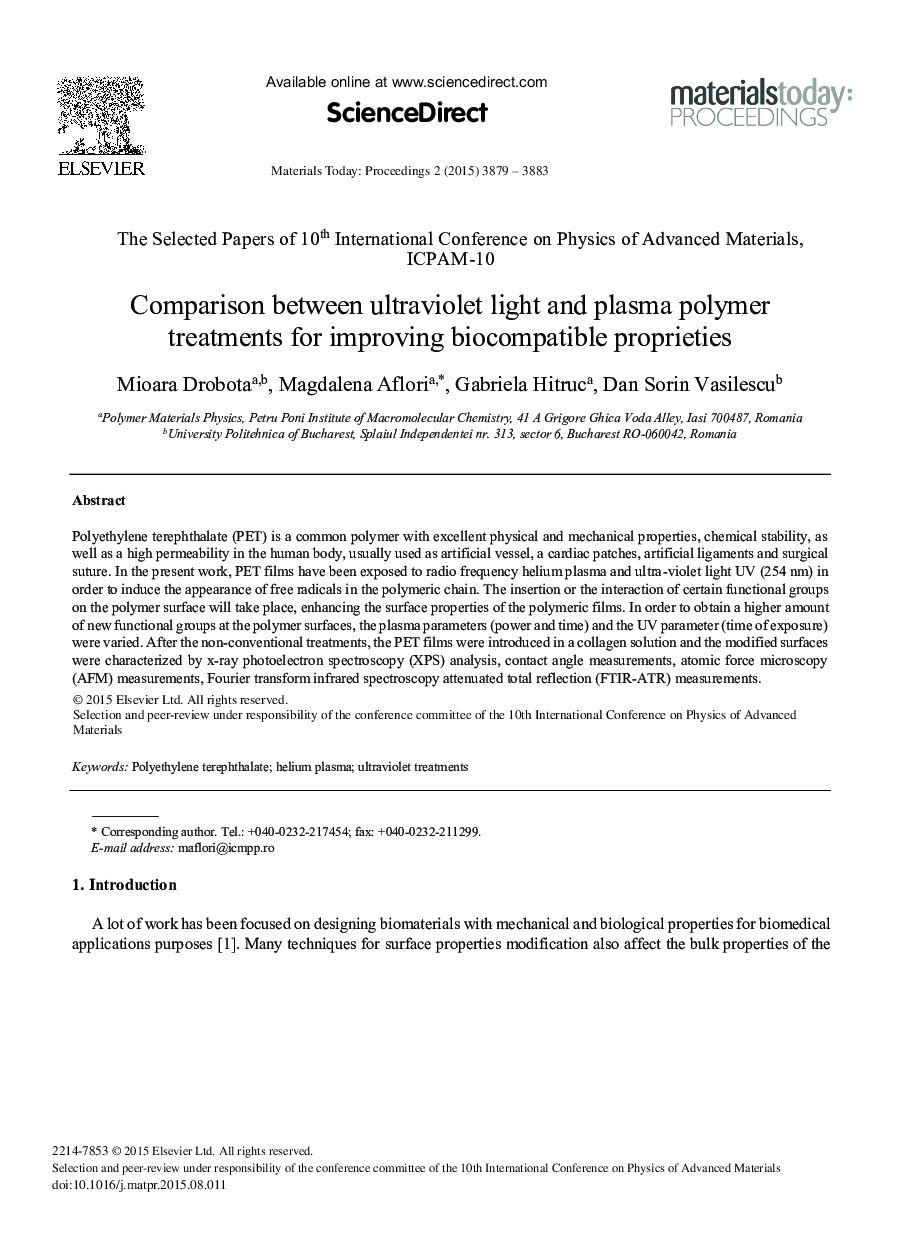| Article ID | Journal | Published Year | Pages | File Type |
|---|---|---|---|---|
| 1631190 | Materials Today: Proceedings | 2015 | 5 Pages |
Polyethylene terephthalate (PET) is a common polymer with excellent physical and mechanical properties, chemical stability, as well as a high permeability in the human body, usually used as artificial vessel, a cardiac patches, artificial ligaments and surgical suture. In the present work, PET films have been exposed to radio frequency helium plasma and ultra-violet light UV (254 nm) in order to induce the appearance of free radicals in the polymeric chain. The insertion or the interaction of certain functional groups on the polymer surface will take place, enhancing the surface properties of the polymeric films. In order to obtain a higher amount of new functional groups at the polymer surfaces, the plasma parameters (power and time) and the UV parameter (time of exposure) were varied. After the non-conventional treatments, the PET films were introduced in a collagen solution and the modified surfaces were characterized by x-ray photoelectron spectroscopy (XPS) analysis, contact angle measurements, atomic force microscopy (AFM) measurements, Fourier transform infrared spectroscopy attenuated total reflection (FTIR-ATR) measurements.
